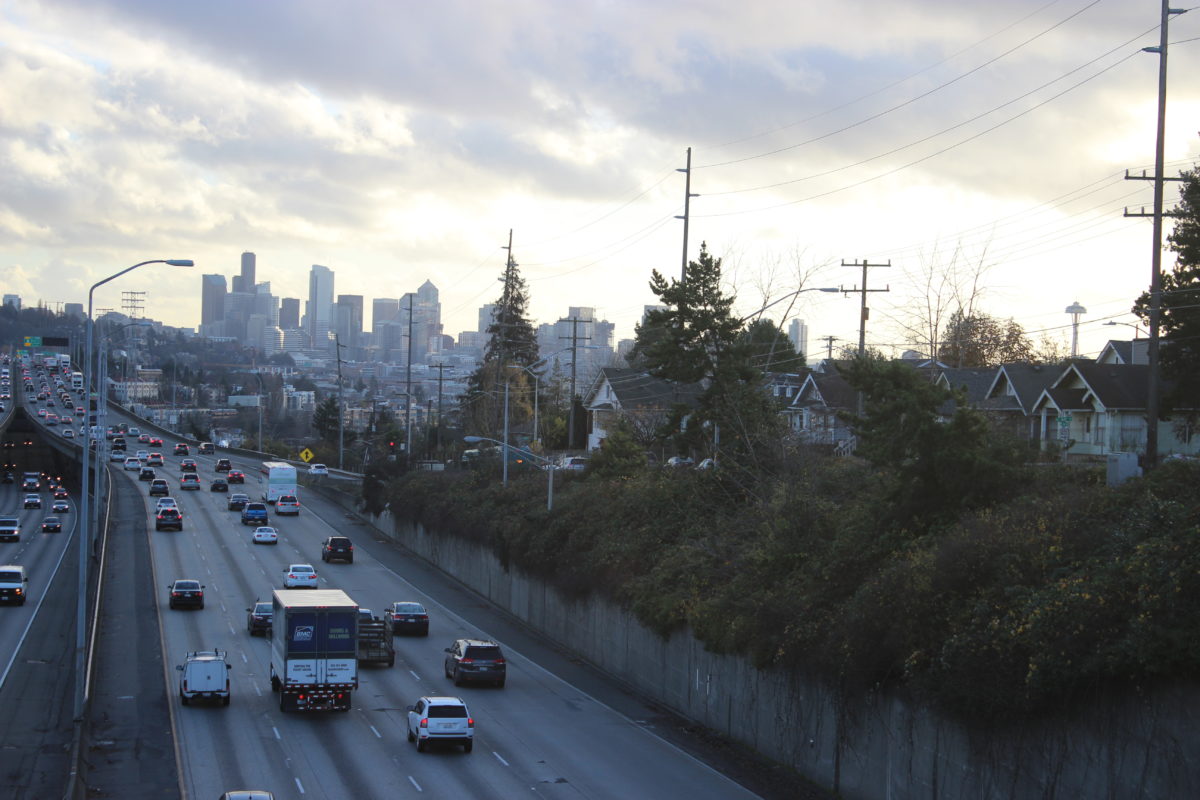
University of Washington (UW) sophomore Zubeyda Ahmed and I walked down University Way, locally known as “The Ave.,” struggling to find spots to tour the campus and the surrounding neighborhood.
Ahmed turns to me and says, “I feel like I’m always busy these days.”
Ahmed serves as the Chair of Outreach and Recruitment in UW’s Black Student Union. When she applied to UW, the university’s website and recruitment brochures revealed images of a diverse student population.
The website boasted images of groups of black, Pacific Islander, Asian, Latino students — but she has to work hard on her outreach efforts to find students of those backgrounds.
“I don’t see that much diversity on the actual campus,” she said.
“I want the diversity on the brochures to translate into the people I see on campus. I also want to see an increase of Black folk — all black people — black Muslim women too.”
For students at the University of Washington, it is a privilege to attend a college with such proximity to a city like Seattle. They don’t have to wander far to catch a glimpse of Seattle’s skyline against the backdrop of clouds rolling in. It is both calming and hectic to witness. It is the perfect scene to analyze the enduring resilience of an urban campus and its impact on student life

Ahmed’s busyness comes from making time for her school and organization responsibilities, and finding calm away from the emotional exhaustion of wondering when we’ll see another black person on this sidewalk.
I know exactly what she means.
A UW alumna myself, I wonder, “How did we survive?” We as black women are grateful to walk through this campus, while also noticing its contradictions.
There are things that haven’t changed: the boba tea spots, the stretching of a dollar for the comfort of pho, and the rare joy of seeing another black person weaving through the Ave. on their way home.

On our walk, we come across the graffiti wall where students and local artists express themselves. I’ve watched this wall change so much over the years with new “installations” springing up whenever inspiration strikes.

In between moments of friends catching up or grabbing a quick bite to eat before studying for their upcoming finals, there are some contradictions.
These contradictions are apparent when watching students caught up in the rush of getting from one place to the next, contrasting with a homeless person who is not part of the frenzied college scene.


Students are not untouched by this issue. Homelessness in Seattle was declared an emergency at the city and county level in 2015. Last year, 4,505 people were found to be unsheltered during King County’s One Night Count, with the number of homeless college students on the rise each new school year.
We’re all doing our best to just make it. In the midst of our personal struggles, how often do we ask each other how we’re doing?
I kept wondering this as Ahmed and I walked into UW’s Ethnic Cultural Center.
Places like the ECC are a great example of how people and communities adapt to feeling out of place or marginalized. It was there I met Hana Arega, a UW sophomore and aspiring medical doctor, studying for final exams at UW’s Ethnic Cultural Center. We spoke about how she came to choose UW as her university.

“UW means home to me.” Arega said. With goals of becoming a doctor one day, Arega is a hard worker. I wonder what she’d tell someone struggling to persevere on this busy campus.
“I can promise you it will be hard but I feel like, it’s manageable,” she tells me. “You can always find help in others like at the ECC or UW’s Instructional Center. “There’s always someone there for you. Just try to find the people that can help you. That’s one of the most important things, finding those resources.”
She then shares the words of reassurance all city dwellers need to hear more often: “You can do it.”
Seattle Globalist’s “Portraits of Resilience” series was produced as part of the Globalist Youth Apprenticeship program in partnership with Seattle’s Office of Sustainability & Environment. The series highlights communities of color contributing to a more resilient Seattle.

